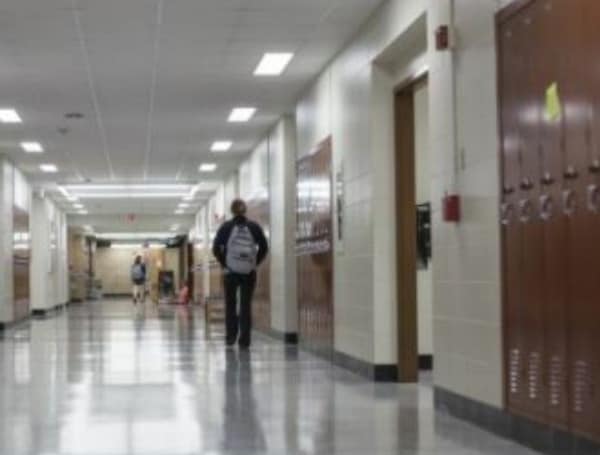The latest results from the Nation’s Report Card, released on January 29, 2025, paint a concerning picture of U.S. students’ academic recovery nearly five years after the COVID-19 pandemic. The National Assessment of Educational Progress (NAEP), often referred to as the Nation’s Report Card, shows continued declines in reading scores and only modest progress in 4th-grade math, with students still lagging behind pre-pandemic achievement levels.
The 2024 NAEP results reveal a troubling trend in reading proficiency. Average reading scores declined by 2 points for both 4th and 8th graders compared to 2022, compounding a 3-point drop seen between 2019 and 2022. This marks a decade-long stagnation in reading performance, with scores now hovering near levels last seen in the early 1990s.
READ: White House Fires Back At Washington Post Over “Misleading” Claims On NIH Policy
Fewer than one-third of students nationwide are performing at or above the NAEP Proficient level in reading, which indicates the ability to consistently understand and interpret written text. Alarmingly, 40% of 4th graders are working below the NAEP Basic level, the largest percentage since 2002. These students likely struggle to recognize implied reasons for a character’s actions in a story. Similarly, about one-third of 8th graders are failing to meet the NAEP Basic benchmark, the highest percentage ever recorded.
“No state saw gains in reading, and only one large urban district—Atlanta Public Schools—made progress in 4th-grade reading,” said Patrick Kelly, a member of the National Assessment Governing Board and an AP U.S. Government and Politics teacher in South Carolina. “Reading is foundational to all subjects, and failure to read well prevents students from accessing information and building knowledge across disciplines.”
While reading scores declined, there was some progress in 4th-grade math. The national average math score for 4th graders increased by 2 points compared to 2022, with 13 states, the District of Columbia, Puerto Rico, and 14 large urban districts seeing improvements. States like Alabama, Mississippi, and West Virginia, as well as districts such as Miami-Dade County Public Schools and Los Angeles Unified School District, were among those that made gains.
READ: Trump’s First DOGE Executive Order Doesn’t Quite Dismantle Government Bureaucracy
However, the progress was not universal. Nearly 40% of 4th graders are performing at or above the NAEP Proficient level in math, but almost a quarter are working below the NAEP Basic level, meaning they likely cannot identify odd numbers or solve basic unit conversion problems.
In 8th grade math, the national average score remained flat compared to 2022, following a historic 8-point drop that year. No state or district made gains in 8th-grade math in 2024, and more than a quarter of 8th graders are performing below the NAEP Basic level. These students likely cannot use similarity to find the length of a side of a triangle.
Despite some progress in 4th-grade math, the nation has yet to rebound to pre-pandemic achievement levels in any grade or subject. Only two states—Louisiana and Alabama—have surpassed their 2019 scores in a single grade and subject (4th grade reading and math, respectively). No state or district has surpassed its 2019 8th-grade scores in either subject.
READ: Florida Sen. Rick Scott Eyes Strict Sanctions For Cuban Regime Over Human Rights Abuses
“This is unacceptable, especially for our lowest-performing students,” said Beverly Perdue, former governor of North Carolina and chair of the National Assessment Governing Board. “We need to invest more in data-informed efforts that have been shown to work so that we can lift up our students and accelerate their learning. It’s imperative that we ensure all young people have the academic foundation they need to succeed in school and in their careers.”
The report also highlights a growing achievement gap between higher- and lower-performing students, a trend that has persisted for over a decade. In both reading and math, declines in 2024 were primarily driven by lower-performing students, who now score about 100 points below their higher-performing peers.
“This growing achievement gap is troubling,” said Martin West, vice chair of the Governing Board and a professor of education at Harvard University. “We made progress in closing this gap until around 2010, but it’s been steadily widening since. Policymakers at all levels must understand and work to reverse this trend by holding all students to high standards and helping them reach that bar.”
The NAEP student survey data also revealed that chronic absenteeism, while improving, has not returned to pre-pandemic levels. This ongoing issue likely contributes to the struggles in academic recovery, particularly for lower-performing students.
Please make a small donation to the Tampa Free Press to help sustain independent journalism. Your contribution enables us to continue delivering high-quality, local, and national news coverage.
Connect with us: Follow the Tampa Free Press on Facebook and Twitter for breaking news and updates.
Sign up: Subscribe to our free newsletter for a curated selection of top stories delivered straight to your inbox.
